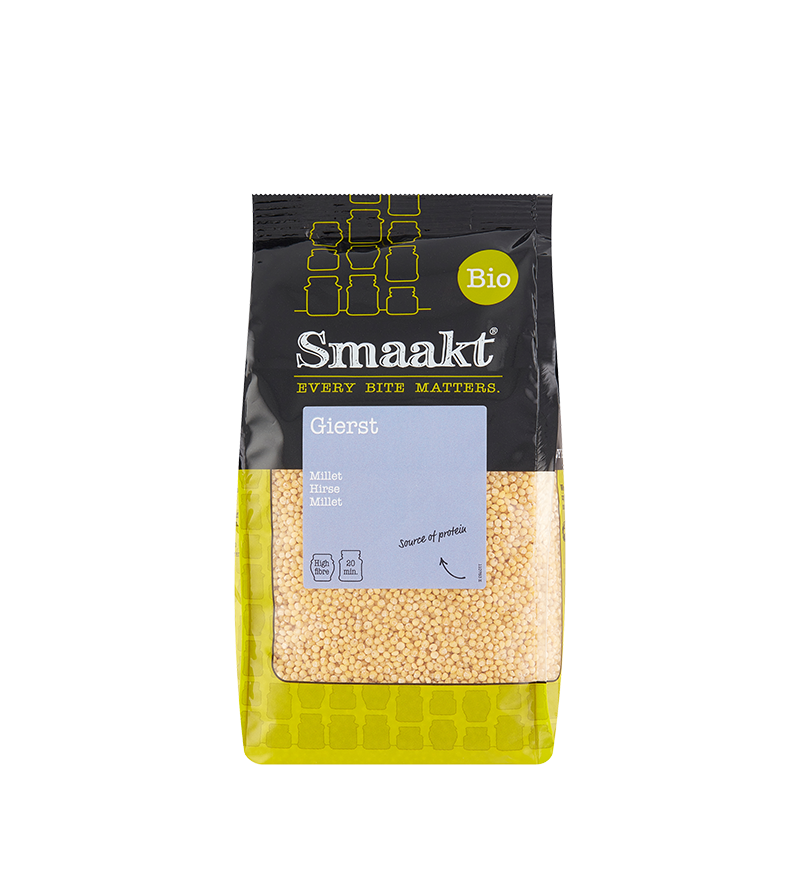Which millet do I have?
In the spirit of the 2023 International Year of Millet, I went to the shop and bought some millet. But what sort of millet?

The bag doesn't say at all what it is. Just "millet" (in Dutch, "gierst"). OK, we don't eat much millet in this country, but it's a bit confusing since some recipes ask for a certain type of millet. I wrote to the Dutch shop and asked, and apparently the answer is "Pluimgierst". I'm confused by many different names, so... well here's my list of what I think I've worked out so far, about the main culinary millets that you might possibly find in a shop:
| English | Scientific | Dutch | Notes |
|---|---|---|---|
| Proso millet, feather millet | Panicum miliaceum | Pluimgierst, geelgierst, goudgierst | The Dutch shop says they offer "pluimgierst". Proso is "often used in organic farming systems in Europe" and common in USA too? |
| Foxtail millet, Italian millet, panic | Setaria italica, Panicum italicum | Trosgierst | Most common Asian millet (in India since antiquity), and 2nd most common worldwide |
| Pearl millet | Cenchrus americanus, Pennisetum glaucum | Parelgierst | Most common worldwide (in Africa+India since antiquity) |
| Finger millet | Eleusine coracana | Vingergierst | Known as kelvaragu (or ragi) in India, and kurakkan in Sri Lanka. Originated in East Africa. |
| Kodo millet | Paspalum scrobiculatum | ? | Although Wikipedia for Finger millet mentions "kodo" to mean millet-flour in Nepal, the "kodo millet" page says "not to be confused with finger millet"! Kodo millet is grown/used in Nepal and India. |
Is this table correct? I don't know! Please do correct me if you see a mistake. I might try to update Wikipedia with these cross-language comparisons later - it's got some of them, but it doesn't have a standalong article for each of these so it's not necessarily the place to find the info.
UPDATE: This article by an American academic is informative, and has a detailed table